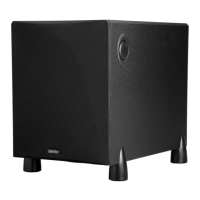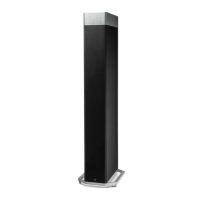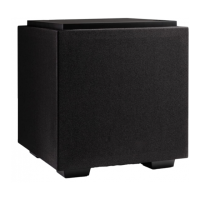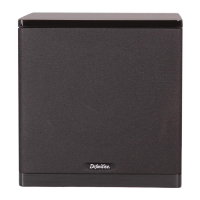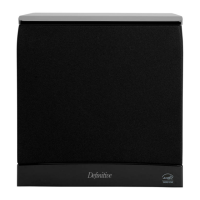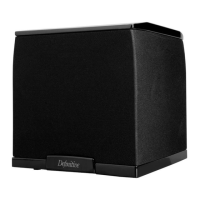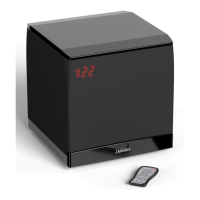Subwoofer
Placement
Your Definitive Technology subwoofer has been designed to operate at
frequencies generally below 150 Hz. Because low-frequency information
in this range essentially is non-directional, your subwoofer can be located
anywhere in your listening room that is most convenient. Also, the con-
tinuously variable low pass filter operates at a very fast roll-off, ensuring
great performance wherever you place your subwoofer. There are, how-
ever, some general rules that you should bear in mind when locating
your subwoofer:
1.
For maximum output the subwoofer should be placed in a corner or
against the wall.
2.
Corner placement will increase the subwoofer's efficiency, which
in
turn will increase your system's maximum output and improve the
dynamic capability
of
the subwoofer.
3.
While one Definitive Technology subwoofer will always sound great,
the use
of
two subwoofers will definitely enhance your system's
performance by providing a smoother and more consistent response
pattern. Here, it is recommended that you locate the subwoofers on
the same side
of
the room as the main speaker
of
the same channel
(if you are feeding them discrete left and right channel signals).
4. When using the
Pro
Sub
with Definitive ProMonitors, consult the
ProMonitor instruction manual for other placement tips.
Wiring
Diagrams
Low
Level
LFE
Connections
Most new model
receiv~rs,
preamps and decoders feature a mono
(line level) output intended to be used with subwoofers. This is the
simplest connection method to use. You can feed the mono or LFE
subwoofer output
of
your receiver or decoder to the LFE low level
input on the subwoofer and achieve full performance. Usually,
if
your
receiver or decoder already has a built-in low pass crossover, you should
turn the low pass control on your ProSub to 150. Also, these subwoofer
outputs tend to have less gain than main line level outputs, thus the gain
control on your subwoofer may need to be adjusted accordingly for
proper balance. Use the LFE input on the subwoofer to hook the sub-
woofer up to the LFE (low frequency effects) output on Dolby Digital
AC-3
* decoders, receivers, etc.

